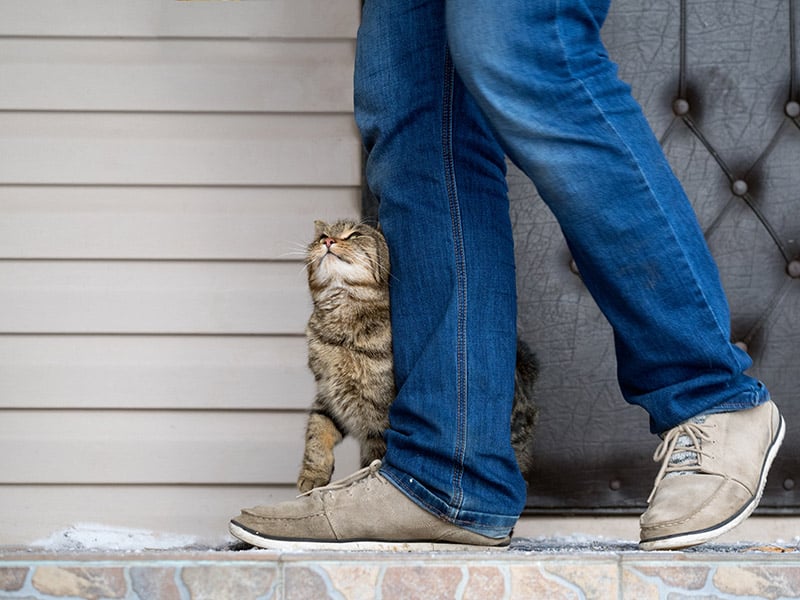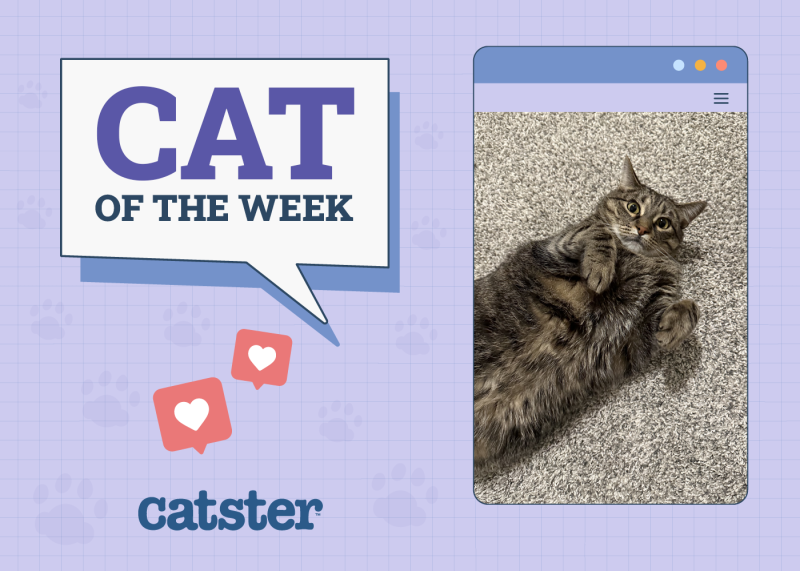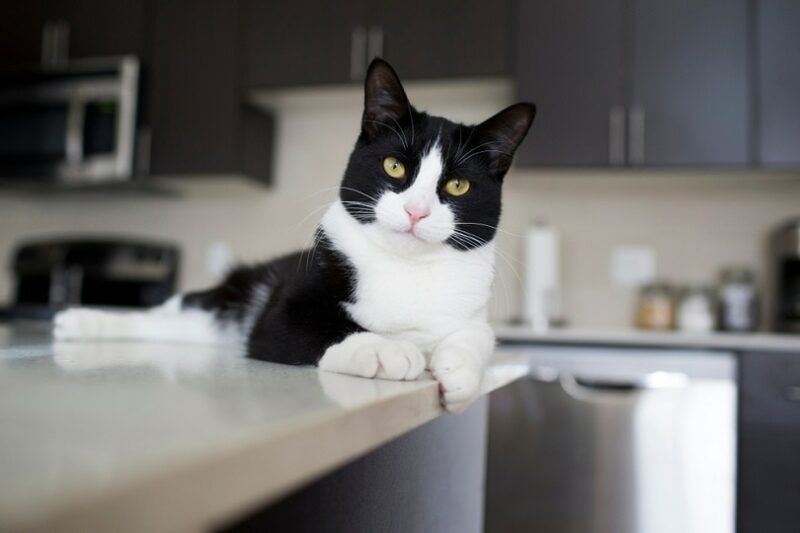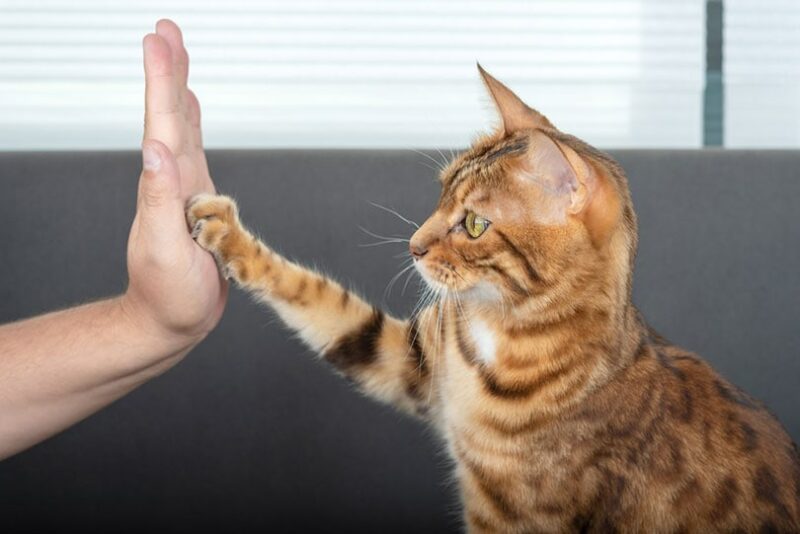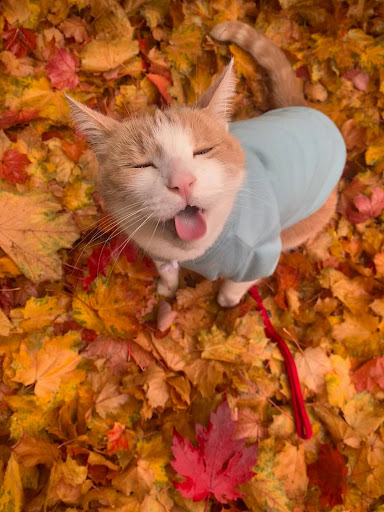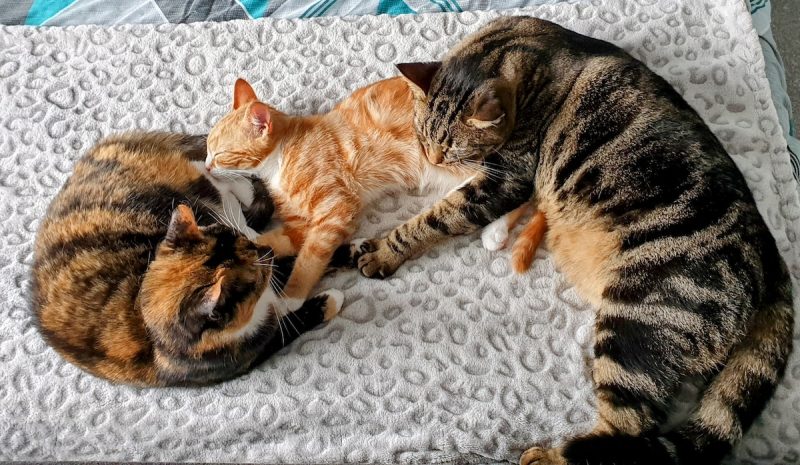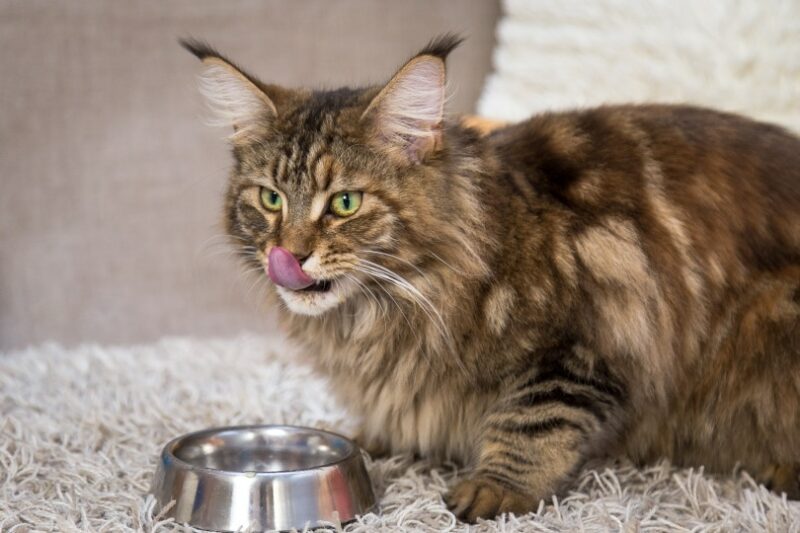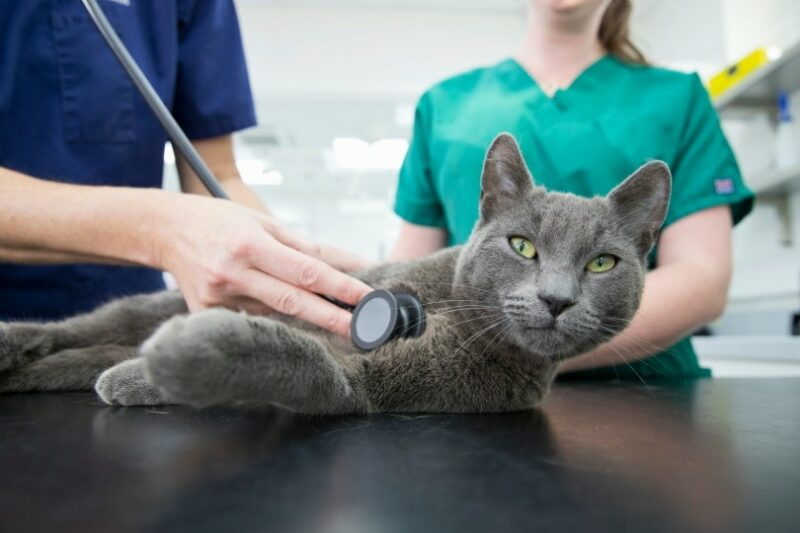In this article
Your pet brings you unconditional love, but their closeness to you can sometimes come with consequences. A 2010 CDC study concluded that more than 86,600 injuries caused by dog and cat-related falls are estimated to happen in the United States each year, which goes to show that pets are indeed a common tripping hazard.1
The study’s results highlight how essential it is to be aware of situations that could cause you to tumble over your fluffy friend. Read on to learn how to reduce the risk of a pet-related trip or fall.

CDC Study into Pet-Related Fall Injuries
The Centers for Disease Control and Prevention (CDC) looked into data on emergency department visits due to falls between 2001 and 2006 to estimate how many were associated with cats and dogs. The researchers estimated that 86,629 injuries per year were linked to cat and dog-related falls based on 7,456 cases. Here are some interesting findings from the study:
- Dogs were involved in 7.5 times as many fall-related injuries as cats.
- People over 75 years suffer higher injury rates, but any age range can be affected.
- Females were 2.1 times more likely to experience a pet-related fall injury than males.
- The most common injuries caused by pet-related falls were fractures, abrasions, or contusions.
- Approximately 66.4% of cat-associated falls were caused by tripping or falling over the cat.
- Approximately 31.3% of dog-related falls were caused by tripping or falling over the dog.
- 2% of dog-related falls happened because the person was pushed or pulled.
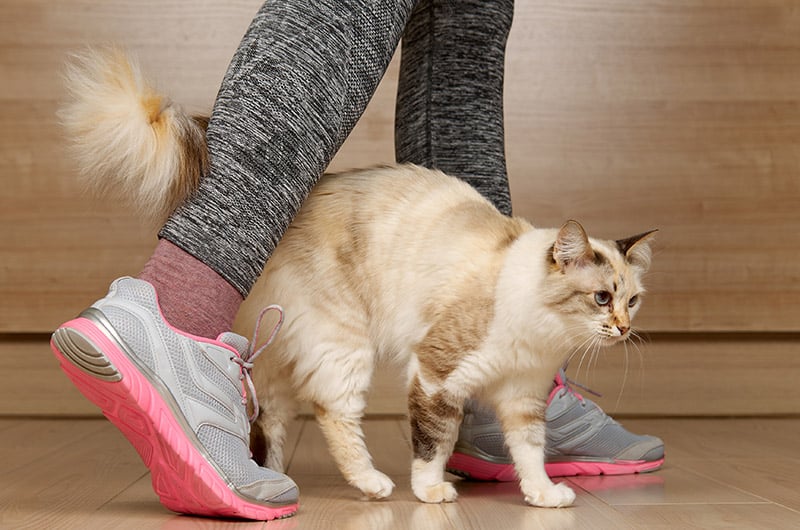
How Do Fall Injuries Happen?
Before we explore how to prevent pet-related falls, let’s look at some of the most common situations that lead to them.
The Sneak-Up-Behind Maneuver
Your pet could be snoozing on the couch one minute, then be at your heels all of a sudden, hoping for a tasty morsel because you’ve started preparing lunch in the kitchen. Cue the turn and trip because they came up behind you so quickly and quietly, and you had no idea they were there.
Jumping Up
An excited dog, especially a large or heavy one, that’s thrilled about your return home could jump up for joy and knock you over. Training can help with this, as we’ll discuss more later.
Stairs
Have you ever been walking down the stairs, and your pet suddenly runs behind you, determined to join you in whatever you’re doing (especially if it’s the kitchen you’re heading to)? Many cats and dogs love to follow their owners around, which is lovely, but it can be a recipe for disaster if you don’t keep your eyes peeled.

Pulling & Pushing
The CDC study revealed that around 21.2% of falls happen due to pulling or pushing. This is especially likely to happen if a dog hasn’t been trained to behave on the leash, pulling or lunging toward other dogs, people, or objects that interest or scare them.
Retractable leashes are a significant cause of this, as explained to PetMD by Melissa Winkle, an occupational therapist. If a dog suddenly runs towards something on a leash that extends several feet, the owner’s control is diminished, and the pull is more powerful than usual.
Getting caught up in a dog’s lead is another possible way to get dragged through the mud. As for pushing, a dog that jumps up on your front or back out of excitement could accidentally push you over.
Chasing
Obedience training is also crucial for ensuring you’re never in a position where you have to chase your pet, which could result in a nasty fall. For example, you may chase an off-leash dog with poor recall to get them back on the leash or prevent them from running into a road. This is dangerous for everyone involved.
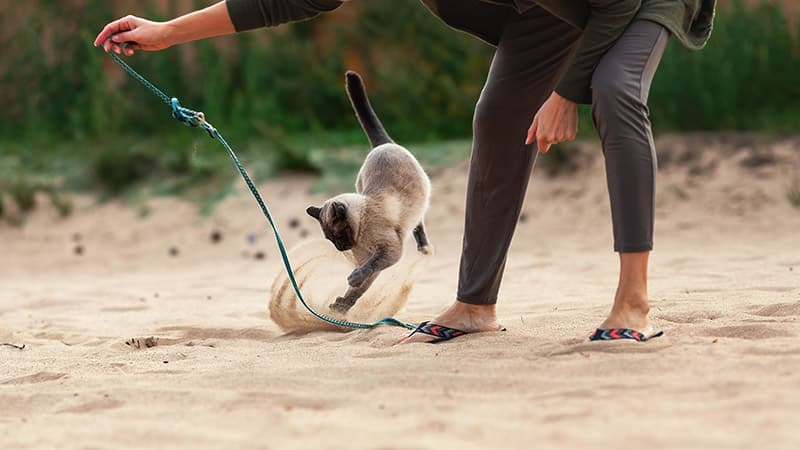
Circling
It’s common for cats to circle around your ankles, which is a way of depositing their scent on you to “claim” you as theirs. This is a big compliment, but if you don’t see it coming, it’s easy to trip and hurt yourself, especially if you’re carrying something obstructing your vision, like a laundry basket.

How to Prevent Pet-Related Falls
The thing about pet-related falls is that they happen out of the blue, catching you totally off your guard. Fortunately, there are measures you can take to keep yourself and your pets safe.
1. Training
Adequate training and socialization are crucial for all dogs, regardless of size. Don’t encourage your dog to jump up on you; instead, show them that such behavior will not get them any attention. If they start to jump up, turn away and ignore the dog until they’re calm and all feet are touching the ground. When the dog realizes that jumping up doesn’t reward them in any way, they should get the hint.
In addition, teach your dog to sit and reward them when they do so. This is an excellent way to redirect unwanted behavior and make your dog work for a treat. Rewarding your dog for calm behavior is also a good idea, even if that’s just dropping a treat at their feet while they’re relaxed. This signals to the dog that calmness reaps rewards, whereas over-excitement does not.
When walking your dog, train them to walk at your side (heel). You can train them for 10 minutes every day, using a treat as a guide. Reward with the treat for every few steps, and gradually build up the number of steps the dog has to take before they get the treat. You can pair the “heel” command with a non-verbal gesture like patting your leg to show the dog exactly where they need to be.
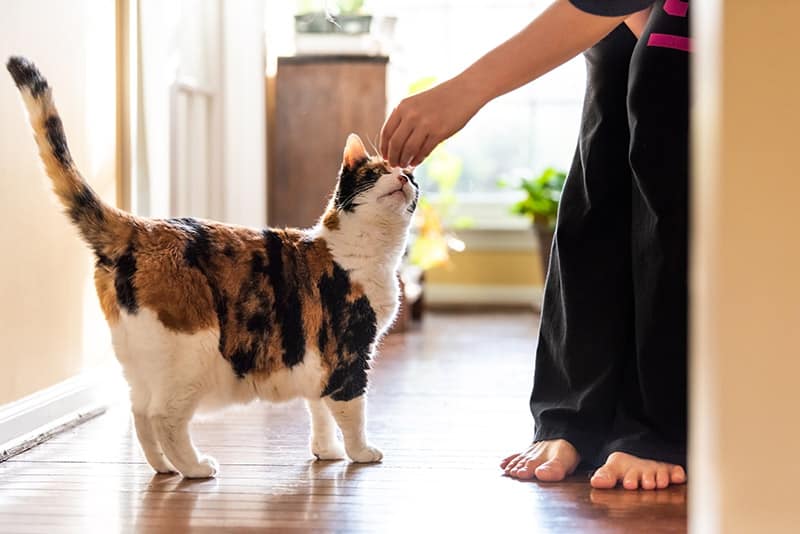
2. Leash Length
If your dog tends to run or lunge at something when out and about, avoid using a retractable leash until they have better leash manners. It’s easier to get pulled over when a dog runs on a long leash, so stick to a standard-length leash instead. This helps keep you and everyone else around you safe.
You may want to work with a professional trainer if your dog continues to have issues on the leash, no matter the dog’s size. Even a small dog can pull someone over with enough force, especially if it all happens suddenly.
3. Environmental Control
Installing a pet gate in your home, for example, may be useful when you’re busy (like cleaning your house or cooking) and can’t pay full attention to where your cat or dog is. Putting them in a gated area lets you know where your pets are at all times without worrying about them suddenly coming up behind you and causing you to trip.
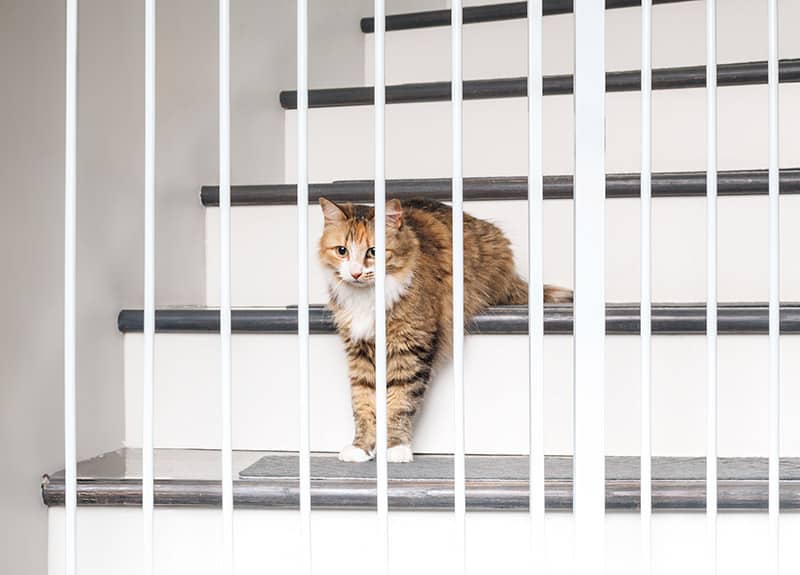
4. Foresight
We all know how hard it is to be aware of potential dangers, but a little foresight can go a long way to keeping yourself injury-free. When cooking, going down the stairs, or moving things around your home (these are just a few examples), consider whether your pets could be a potential tripping hazard.
Forming little habits like remembering to check behind you before you turn around and taking your time when walking down the stairs in case your pet suddenly appears can be really helpful.

Final Thoughts
Everyone with pets should be aware of the risk of fall-related injuries and identify potential hazards in and outside of the home to reduce the possibility of getting hurt. Sometimes, the only solution is consistent training to rectify certain behaviors that increase the chances of a trip or fall.
If you’re finding training a challenge, it’s worth reaching out to a professional behaviorist.
Featured Image Credit: Irina Kozorog, Shutterstock
